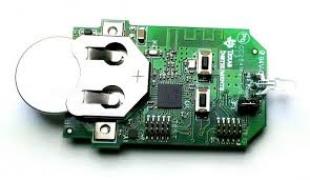Research in this area aims to look for ways to improve navigation in urban areas, especially indoors. The research seeks to offer improvements to indoor positioning in areas including but not limited to accuracy, cost, calibration, reliability and stability. Our research focuses on new Assisted GPS techniques and algorithms, as well as techniques based on wireless protocols such as Wi-Fi, WiMAX and Bluetooth. The research also seeks to provide indoor positioning by exploiting the available sensors inside a smartphone. We employ different techniques to achieve the best positioning, for example, fingerprint, trilateration, triangulation etc.
The current research projects in this area include the design and development of automated Bluetooth Low Energy beacon mapping, obstruction-aware indoor positioning based on Bluetooth Low Energy, RSSI based Self-adaptive Algorithm and indoor positioning based on Electro Magnetic Field. The group has also developed interest in Indoor Positioning System based on image processing and we have an ongoing project on this.
Current research projects include:
- AI-Based GNSS Receiver Techniques and Algorithms
- AI-Based Location Algorithms
- Algorithms and Receivers for Harsh Environments
- Obstruction-Aware Bluetooth Low Energy Indoor Positioning
- Indoor Localization for Bluetooth Low Energy Devices Using Weighted Off-set Triangulation Algorithm
- Camera-aided Region-based Magnetic Field Indoor Positioning
Recent Publications:
- A. Juri, T. Arslan, and F. Wang, “Obstruction-aware Bluetooth Low Energy Indoor Positioning,” in ION GNSS+, Portland, 2016.
- A. Juri, T. Arslan, Y. Du, and Z. Wang, “Dual Scaling and Sub-model based PnP Algorithm for Indoor Positioning based on Optical Sensing using Smartphones,” in 7th International Conference on Indoor Positioning and Indoor Navigation (IPIN), Madrid, 2016.
- A. Juri and T. Arslan, “Bluetooth Low Energy Positioning with NLOS Correction Using Statistical Techniques,” in 2016 International Navigation Conference (INC), Glasgow, 2016.
- A. Juri and T. Arslan, “Isolated Beacon Identification Using a Statistical Approach,” in 8th International Conference on Indoor Positioning and Indoor Navigation (IPIN), Sapporo, 2017, Accepted for publication.
- X. Hou, T. Arslan, A. Juri, and F. Wang, “Indoor Localization for Bluetooth Low Energy Devices Using Weighted Off-set Triangulation Algorithm,” in ION GNSS+, Portland, 2016.
- X. Hou, T. Arslan and A. Juri, “A Received Signal Strength based Self-adaptive Algorithm Targeting for Indoor Positioning,” in 2016 International Navigation Conference (INC), Glasgow, 2016.
- X.Hou and T. Arslan, “Monte Carlo Localisation Algorithm for Indoor Positioning using Bluetooth Low Energy Devices,” in 7th International Conference on Localization and GNSS (ICL-GNSS), Nottingham, 2017,Accepted for publication.
- X.Hou and T. Arslan, “Indoor Localization for Bluetooth Low Energy Devices Using Wavelet and Smoothing Filters,” in 7th International Conference on Localization and GNSS (ICL-GNSS), Nottingham, 2017,Accepted for publication.
- Y. Du, T. Arslan, and A. Juri, “Camera-aided Region-based Magnetic Field Indoor Positioning,” in 7th International Conference on Indoor Positioning and Indoor Navigation (IPIN), Madrid, 2016.
- Y. Du, T. Arslan, and A. Juri, “A Region-based KNN Algorithm for Magnetic Field Indoor Positioning,” in 2016 International Navigation Conference (INC), Glasgow, 2016.
- Y. Du and T. Arslan, “A Segmentation-based Matching Algorithm for Magnetic Field Indoor Positioning,” in 7th International Conference on Localization and GNSS (ICL-GNSS), Nottingham, 2017,Accepted for publication.
- Y. Du and T. Arslan, “Magnetic-Field Indoor Positioning System Based on Automatic Spatial-Segmentation Strategy,” in 8th International Conference on Indoor Positioning and Indoor Navigation (IPIN), Sapporo, 2017, Accepted for publication.



